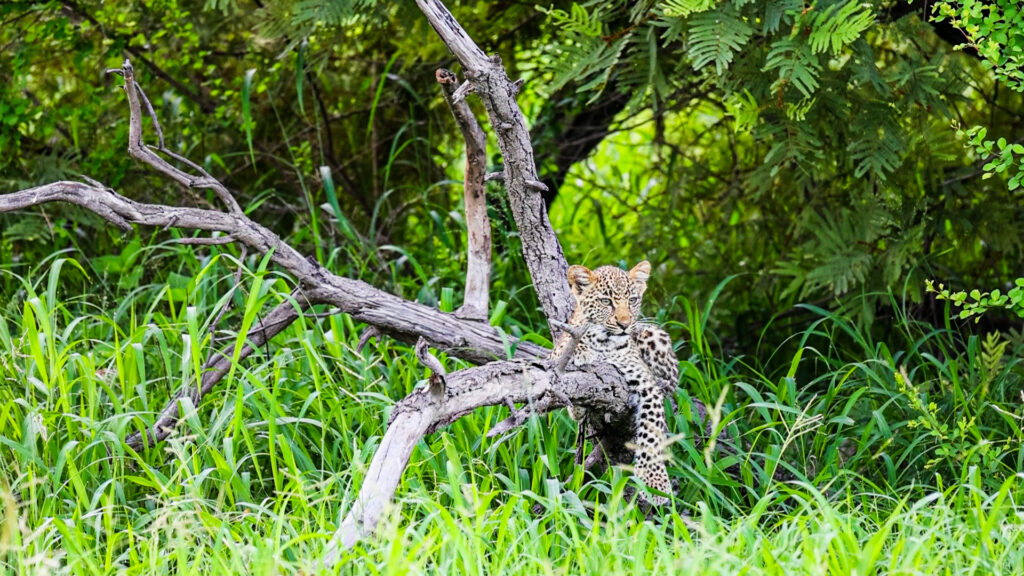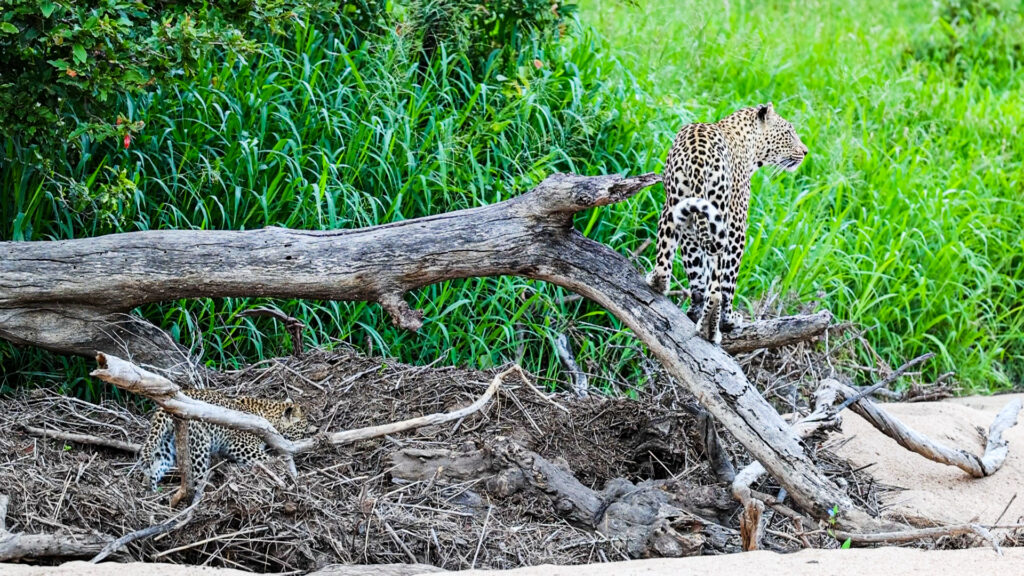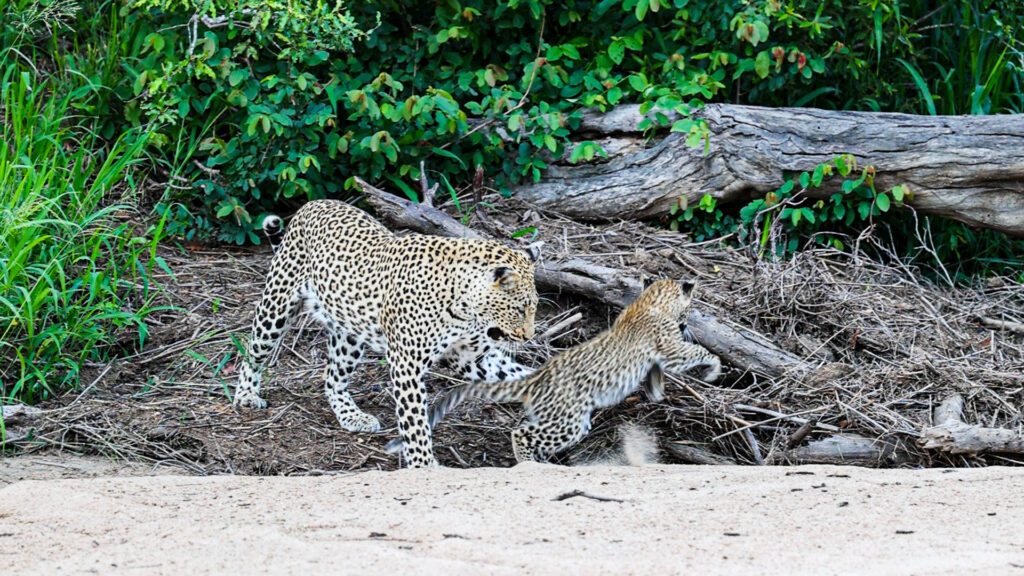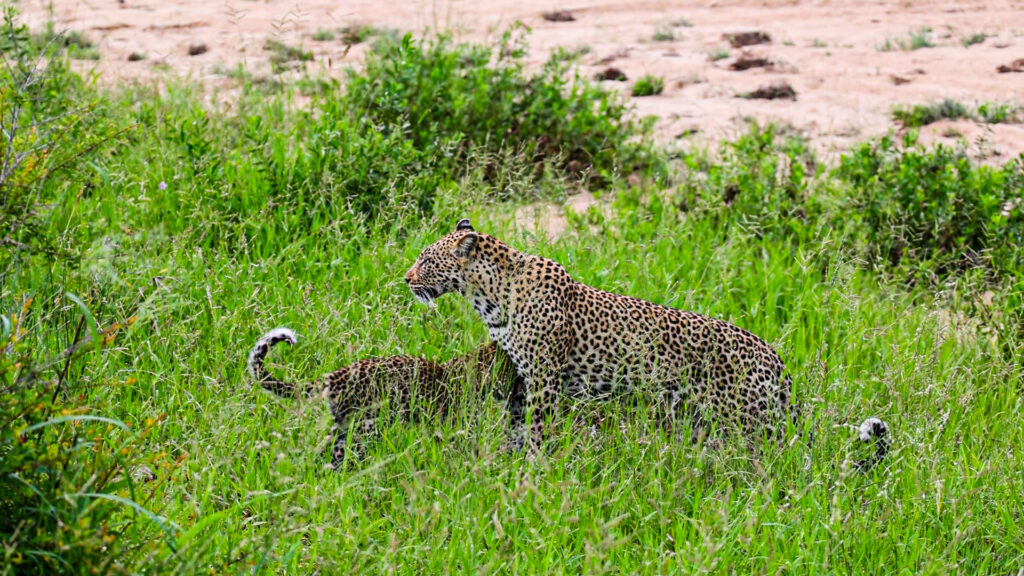A young single leopard cub seeks its mother’s attention to play a game of chase; the cub eventually forces its mom to play along.

Jaco Joubert, a guide at Mala Mala Game Reserve, captured the adorable scene on camera and shared it with LatestSightings.com..

“I sat watching the African sun rise, birds chirping, and the morning breeze caressing the autumn leaves. When a call on the radio broke the silence. “Ingwe,” which means leopard in Shangaan. I started up the engine and, along with my guests, headed in search of the big cat.”

“When we arrived, we were greeted by a single leopard cub playing in the distance. It was evident that the cub was seeking its mother’s attention, as it had no other siblings to keep it busy. The little leopard would pounce on a twig or rustle some leaves, hoping to catch its mother’s attention.”

Leopard cubs are typically born in litters of two or three. However, it’s not uncommon for them to be born alone. The mother leopard will care for her cubs until they’re about two years old teaching them how to hunt and survive in the wild.
— WATCH —
“After a few attempts, the mother reluctantly gave in and started to play with her cub. The two of them were chasing each other around the dry riverbed, pouncing on each other, and hiding behind rocks. It was as if they were in their own little world, with nothing else mattering but each other.”

The cub’s playtime is crucial for their development. It allows them to practice skills they will need in the future. Through playing, they learn to stalk, pounce, and chase, which are all essential skills for catching prey.

Follow our Cute Tings YouTube Channel for more adorable wildlife sightings.

“They then ran up the embankment; the little leopard cub tried to keep up with its mother’s speed but inevitably fell behind. The mother would wait for her cub to catch up, and then they would continue their game of chase.”

Leopard cubs are vulnerable and defenseless, but they are closely guarded and watched by their moms. Through their mothers mentorship and play, they learn vital hunting skills and develop their muscles, making them stronger and more agile.





